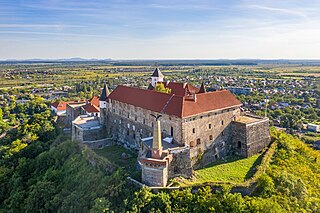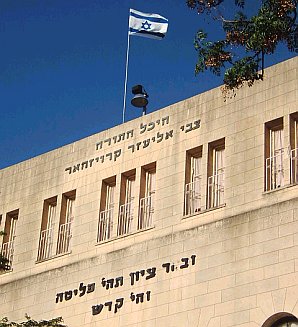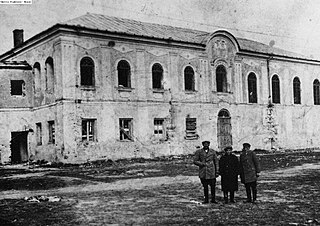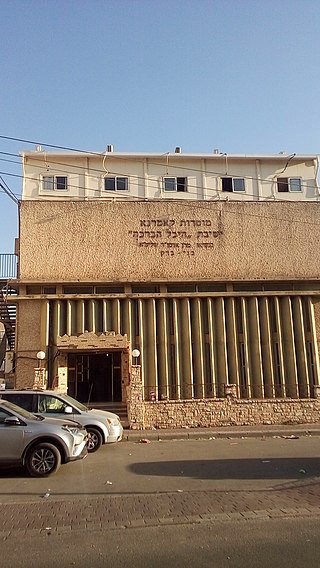Early life
Rabinovich was born as the third child to his parents Rabbi Baruch and Frima Rabinovich in Munkacs, Carpathian Ruthenia, the country itself having at the time just been created with a sizable piece of Hungary, which in turn received Munkacs from Czechoslovakia with the help of Nazi Germany in 1938.
His father, Rabbi Baruch Yehoshua Yerachmiel Rabinowicz served as Chief Rabbi of Munkacs following the death of his father-in-law Chief Rabbi Chaim Elazar Spira in 1937 until the Nazis occupied Munkacs in 1944.
During World War Two, Rabinovich's father escaped the Nazis and fled with his entire family to the land of Israel (then Mandatory Palestine). Shortly after they arrived in Mandatory Palestine, Rabinovich and his siblings were orphaned with the death of their mother, Chaya Frima Rivka Rabinovich. Rabinovich studied in Israel, undertook secular studies in public schools in São Paulo, Brazil, and later studied in the United States at the Telshe yeshiva in Cleveland, Ohio, refusing to attend college, to his father’s disappointment. [1] At Telshe, he became especially close to Rabbi Mordechai Gifter with whom he had a study partnership of several consecutive hours on a daily basis and from Rav Gifter he acquired his derech halimud. Following five years at Telshe, Rabinovich moved to Beis Medrash Elyon, a yeshiva for advanced learning in Spring Valley, New York. He also maintained a close relationship with the Satmar Rebbe Rabbi Joel Teitelbaum until his death in 1979.
While Rabinovich was in Beis Medrosh Elyon, the elders of Munkacs met in Brooklyn. Led by Rabbi Chaim Ber Greenfeld and Rabbi Shlomo Goldstein, both gabbai's (secretaries) of the Munkacser Rebbe, Rabbi Chaim Elazar Spira, the participants agreed unanimously that the time had come for Munkacs Hasidism to be born again, in America, and that Rabinovich should be their Rebbe.
As Rebbe
Rabinovich married Nechama Perl, daughter of Rabbi Aron Bernstein of Jerusalem in 1962 and was immediately appointed as leader of the Munkacs community. At first, he settled in the Williamsburg section of Brooklyn, New York and later moved to the Boro Park section of Brooklyn. He immediately began to rebuild the community and established religious and educational bases in the United States, Canada, Israel, England and Australia.
Rabinovich's followers and petitioners seek his advice on all issues. His counsel is frequently sought by government and elected officials for his blessings and support. [2]
Rabinovich frequently visits his home town in Munkacs (now, Mukachevo, Ukraine), [3] to strengthen the remaining Jews and to help rebuild the Munkacs Jewish community. In August 2006, [4] a Jewish community center and Synagogue were dedicated by Rabbi Rabinovich to serve the needs of the community.
Rabinovich has authored numerous books on Torah and Halacha (Jewish Law), among them Sharei Orah and Olas Shabbos. He also serves as honorary president of Kollel Munkatch and Ten Suburbs in Jerusalem, Israel.

Satmar is a Hasidic group founded in 1905 by Grand Rebbe Joel Teitelbaum, in the city of Szatmárnémeti, Hungary. The group is an offshoot of the Sighet Hasidic dynasty. Following World War II, it was re-established in New York.

Vizhnitz is the name of a Hasidic dynasty founded by Rabbi Menachem Mendel Hager. Vizhnitz is the Yiddish name of Vyzhnytsia, a town in present-day Ukraine.

Mukachevo is a city in the valley of the Latorica river in Zakarpattia Oblast (province), in Western Ukraine serving as the administrative center of Mukachevo Raion (district). The city is a rail terminus and highway junction, and has beer, wine, tobacco, food, textile, timber, and furniture industries. During the Cold War, it was home to Mukachevo air base and a radar station.

Modzitz, or Modzhitz, is the name of a Hasidic group within Orthodox Judaism that derives its name from Modrzyce, one of the boroughs of the town of Dęblin, Poland, located on the Vistula River.

Telshe Yeshiva is a yeshiva in Wickliffe, Ohio, formerly located in Telšiai, Lithuania. During World War II the yeshiva began relocating to Wickliffe, Ohio, in the United States and is now known as the Rabbinical College of Telshe, commonly referred to as Telz Yeshiva, or Telz in short.

Munkatch Hasidism is a Hasidic sect within Haredi Judaism of mostly Hungarian Hasidic Jews. It was founded and led by Polish-born Grand Rebbe Shlomo Spira, who was the rabbi of the town of Strzyżów (1858–1882) and Munkacs (1882–1893). Members of the congregation are mainly referred to as Munkacs Hasidim, or Munkatcher Hasidim. It is named after the Hungarian town in which it was established, Munkatsh.
Biala is a Hasidic dynasty originating from the city of Biała Rawska, where it was founded by R. Yaakov Yitzchak Rabinowicz (II). Biala is a branch of Peshischa Hasidism, as R. Yaakov Yitzchak Rabinowicz (II) was the great-grandson of R. Yaakov Yitzchak Rabinowicz, the first Peshischa Rebbe. The dynasty was originally spread throughout many towns in Poland, often taking the names of said towns. However, after the Holocaust, the name "Biala" become synonymous with the entire dynasty. Today the dynasty is mostly concentrated in Israel, America and Switzerland.

Rabbi Yekusiel Yehuda Teitelbaum (1808–1883), known as the Yetev Lev, was a Hasidic Rebbe in Austria-Hungary.
Ropshitz is the name of a Hasidic dynasty, or rabbinical family and group, who are descendants of Rabbi Naftali Zvi of Ropshitz (1760–1827). Ropshitz is the name of a town in southern Poland, known in Polish as Ropczyce.

Rabbi Yitzchok Yaakov Weiss, commonly known as the Minchas Yitzchak after the responsa he authored, was the rabbi of the Edah HaChareidis in Jerusalem at the time of his death, as well as a posek, and Talmudic scholar. His rulings on Jewish law (halacha) are frequently cited and relied upon by rabbinic courts and scholars.

Moetzes Gedolei HaTorah is the supreme rabbinical policy-making council of the Agudat Yisrael and Degel HaTorah movements in Israel; and of Agudath Israel of America in the United States. Members are usually prestigious Roshei Yeshiva or Hasidic rebbes, who are also usually regarded by many Haredi Jews to be the Gedolim ("great/est") sages of Torah Judaism. Before the Holocaust, it was the supreme authority for the World Agudath Israel in Europe.

From the founding of political Zionism in the 1890s, Haredi Jewish leaders voiced objections to its secular orientation, and before the establishment of the State of Israel, the vast majority of Haredi Jews were opposed to Zionism, like early Reform Judaism, but with distinct reasoning. This was chiefly due to the concern that secular nationalism would redefine the Jewish nation from a religious community based in their alliance to God for whom adherence to religious laws were “the essence of the nation’s task, purpose, and right to exists,” to an ethnic group like any other as well as the view that it was forbidden for the Jews to re-constitute Jewish rule in the Land of Israel before the arrival of the Messiah. Those rabbis who did support Jewish resettlement in Palestine in the late 19th century had no intention to conquer Palestine and declare its independence from the rule of the Ottoman Turks, and some preferred that only observant Jews be allowed to settle there.

Chaim Elazar Spira was a rebbe of the Hasidic Munkacs dynasty.

Grand Rabbi Baruch Yehoshua Yerachmiel Rabinovich (1914–1997), was a member of a chassidic dynasty, and succeeded to the title Munkacser Rebbe.

Izhbitza-Radzin is the name of a dynasty of Hasidic rebbes. The first rebbe of this dynasty was Rabbi Mordechai Yosef Leiner, author of Mei Hashiloach, in the city of Izhbitza. Mordechai Yosef founded his own Hasidic movement in the year 5600 (1839), leaving the court of Rabbi Menachem Mendel of Kotzk.

Komarno is a dynasty of Hasidic Judaism founded by Rabbi Aleksander Sender Safrin of Komarno, Ukraine.
Ephraim Fishel Hershkowitz, the Haleiner Rav, was an American Hasidic rabbi, the senior Klausenburger dayan in Williamsburg, Brooklyn, New York. He was a respected elder in the American Orthodox community.
Dinov is the name of a Hasidic dynasty, descended from Rabbi Tzvi Elimelech Spira of Dinov, also called "the Bnei Yisaschar" after his popular work: בני יששכר [Bene Yiśaśkhar]. Dinov is the Yiddish name of Dynów, a town in southern Poland, in the historic region of Galicia.
Koson is a Hasidic dynasty originating in the village of Koson in Ukraine. The dynasty was founded by Rabbi Yehosef Rottenberg in 1897.
















